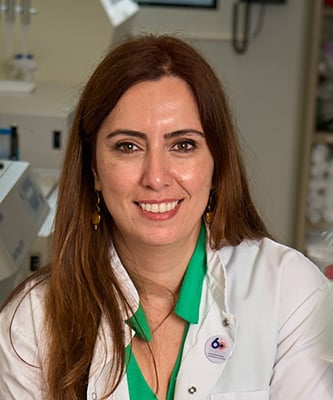Grant title: Studying the impact of in-utero and early life exposure to mycotoxins on viral infections and the epigenome: unveiling the risk factors of endemic Burkitt Lymphoma in African children
Institution: International Agency for Research on Cancer
Grant awarded: September 2025
Dietary toxins remain an underestimated yet profound threat to human health, especially for children in vulnerable regions. Our project seeks to uncover how in-utero and early-life exposure to mycotoxins may contribute, with viruses and parasites, to the development of diseases such as Burkitt lymphoma, the most common childhood cancer in sub-Saharan Africa. With climate change expected to exacerbate food contamination worldwide, this research is not only vital for sub-Saharan Africa but of global importance. We’re deeply grateful to Wereld Kanker Onderzoek Fonds and World Cancer Research Fund International for the support and funding that make this work possible – allowing us to bridge critical gaps in understanding and move closer toward effective prevention strategies that will protect children’s health in Africa and beyond – Dr Rita Khoueiry
Background
Endemic Burkitt lymphoma is the most common childhood cancer in sub-Saharan Africa, posing a serious threat to children’s health. Infection with a virus called Epstein-Barr (EBV) is necessary for endemic Burkitt lymphoma, but not sufficient for tumour development, suggesting other factors may be at play that remain poorly understood.
In these regions, children face chronic mycotoxin exposure. This starts during foetal development through the maternal diet and continues after birth through breastfeeding and contaminated food. Mycotoxins, toxic compounds produced by fungi, enter the food chain because of crop’s infection driven by hot, humid weather and poor food storage.
Mycotoxins contaminate essential foods in low- and middle-income countries, affecting the most vulnerable populations. Moreover, with climate change, exposure to certain mycotoxins is predicted to become a global food safety issue. Studies suggest that mycotoxins may lead to a series of health risks, including weakening the immune system, increasing children’s vulnerability to infections and potentially raising their risk of developing endemic Burkitt lymphoma. Despite these concerns, it is unclear if and how mycotoxins contribute to endemic Burkitt lymphoma. Understanding this relationship is critical for developing new prevention strategies to protect at risk children.
Aims and objectives
We propose to study how mycotoxin exposure, EBV infection, and other regional viruses and parasites present in sub-Saharan Africa impact marks present on the DNA called epigenetic marks. These marks are influenced by environmental exposure and can affect the way our genes function, leading to diseases such as endemic Burkitt lymphoma.
How it will be done
We will use a unique mother-child study from Burkina Faso, where high-quality biological samples have been collected from pregnancy and through the child’s first year of life. This will allow us to track early-life exposure to mycotoxins and infections. We will measure mycotoxin levels and identify infections such as EBV in these children.
Next, we will analyse changes in the children’s epigenetic marks to determine how mycotoxin exposure affects gene activity. This will help us understand whether mycotoxins and EBV together cause harmful changes leading to endemic Burkitt lymphoma.
We will also use laboratory models mimicking early stages of endemic Burkitt lymphoma development to study how mycotoxins and infections alter key pathways in the cells linked to cancer. Finally, we will compare our findings to real tumour samples from children with endemic Burkitt lymphoma from Burkina Faso. This will help us confirm whether the biological changes we identified (in children and in the models) are linked to actual cancer cases and can serve as early markers of the disease development.
Potential impact
Altogether our study will provide evidence that the consumption of mycotoxin-contaminated food is a risk factor for EBV-associated Burkitt lymphoma in African children. This may direct more rigorous actions for cancer prevention in Africa. Since contamination with mycotoxins is expected to increase worldwide due to climate change, our results are also of general interest.
This project will set the basis for translational approaches leading to the development of biomarkers for prevention strategies for paediatric Burkitt lymphoma, protecting future generations and reducing the burden of childhood cancer in sub-Saharan Africa and beyond.
